If you’re searching for a top-shelf LED TV right now, you’ve probably run into Samsung’s product catalog quite a few times.
The tech giant makes some of the best panels on the market in various sizes and price ranges. All of the models you’ll find belong to a specific category, and the most popular categories from Samsung are QLED, Neo QLED, and Crystal UHD.
In this article, we will look at Crystal UHD vs QLED – Samsung’s standard and premium TVs.
Crystal UHD vs QLED – an introduction
Crystal UHD is Samsung’s brand name for standard 4K TVs. So, rather than being an innovative panel technology, Crystal UHD simply stands for “Ultra HD,” or anything above 3840×2160 pixels (4K).
Crystal UHD pros
- More affordable than QLED
- More product variety, especially in the low range
- Significantly better than full HD models
- Advanced models offer impressive features like built-in Alexa
Crystal UHD cons
- Inferior technology to QLED, no quantum dot layer
- No competing models in the high-end range
QLED is Samsung’s premium panel technology that introduces a quantum dot layer in front of the LED backlight, improving image quality, color vibrancy, and more. It’s a direct competitor to LG’s OLED line and provides some of the best TVs on the market at the moment. Samsung’s most expensive premium TVs are 8K QLED sets that can go over $3,000.
QLED pros
- Superior, newer technology
- Higher brightness levels, better performance in bright daylight
- Better color vibrancy and accuracy
- Deeper, more nuanced blacks
QLED cons
- More expensive
- Fewer models in the budget category
What is Crystal UHD technology?
As mentioned, Crystal UHD isn’t exactly a technology – it’s more of a “codename” for Samsung’s standard 4K TVs that don’t have a quantum dot filter. Crystal UHD should be used more as proof that a TV supports the highest resolutions available.
That’s why you’ll also see some of Samsung’s QLED TVs feature the same “UHD” tag: it means they have a resolution of 4K or higher.
How does Crystal UHD work?
Crystal UHD TVs are essentially regular LED TVs with a very high resolution. This means that they feature an LED backlight and several layers to form a high-quality image, such as color filters.
In that sense, Crystal UHD doesn’t offer anything new in the LED TV space – it’s still the same old LED technology.
In all other ways, however, Crystal UHD is a significant improvement over traditional LEDs.
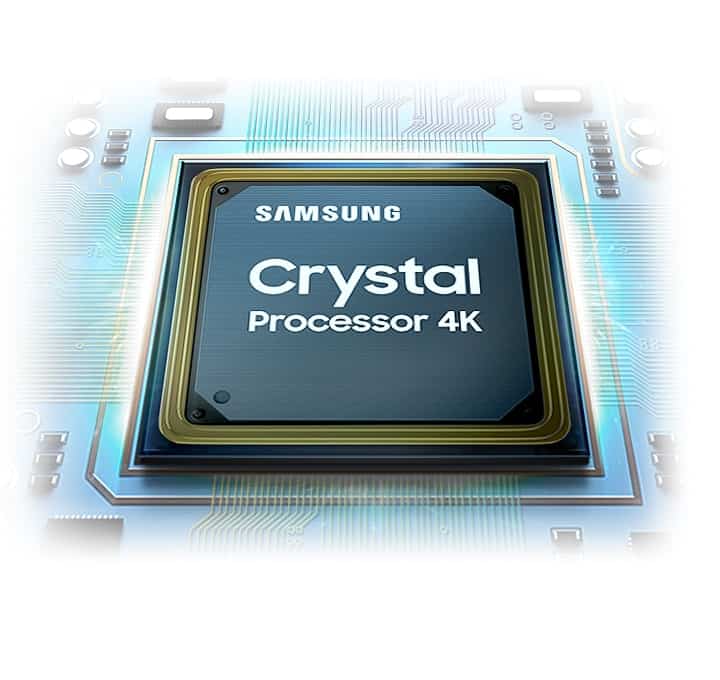
The signature Crystal Processor 4K upscales all content to a 4K resolution. This wasn’t always possible: if you wanted to watch some of your favorite movies or TV shows in 4K, you couldn’t upscale it even if you had a 4K TV. You can do this with the Crystal Processos as long as your device is connected through an HDMI port.
Crystal UHD also features thin bezels for a fully immersive experience and the PurColor® technology that may not rival QLED. Still, it greatly improves the viewing experience when it comes to color accuracy.
Advantages of Crystal UHD over other technologies
Compared to traditional LED TVs, Crystal UHD has one obvious advantage: it comes in resolutions of 3840×2160 and higher. Since a change in resolution is one of the most obvious things that even entry-level users will notice, this is a significant improvement.
Crystal UHD TVs are superior to regular LED TVs in pretty much all other categories as well, including brightness, color vibrancy, viewing angles, etc.
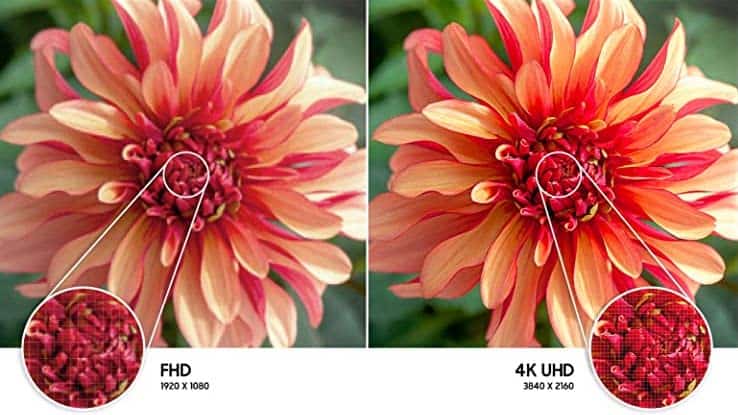
Samsung’s Crystal UHD can also address one big weakness LG’s OLED TVs have: daylight viewing. Due to a powerful LED backlight, Crystal UHD shines brightly even in well-lit living rooms during the day. It’s also less susceptible to burn-in, an issue that has been persistent with some OLED TVs, especially the older models.
Compared to QLED, Crystal UHD offers very little, except a lower price. They’re both manufactured by the same company, but QLED is obviously the more advanced, expensive product line that outperforms Crystal UHD in virtually every category.
That said, there are specific Crystal UHD models that can compete with some QLED models when it comes to refresh rates and other specs. For example, the Crystal UHD AU8000 offers 4K gaming at 120 Hz, while the QLED Q60A only supports 60 Hz and offers fewer HDMI 2.1 ports.
The disadvantages of Crystal UHD over other technologies
Since Crystal UHD doesn’t have a quantum dot filter, you’ll often notice that QLED TVs have a higher contrast ratio, higher brightness levels, and much more pronounced colors. The quantum dot filter makes a big difference, and it’s a big reason for the noticeable price increase compared to Crystal UHD.
Crystal UHD is also outperformed by OLED in almost every category, especially in contrast ratio and black levels.
In the current market landscape, Crystal UHD holds a position of affordable 4K TV sets but offers little more than that. This would place it right between a regular LED TV and more premium-priced QLED and OLED lines.
The best Crystal UHD TVs on the market
Here are some of the best Crystal UHD sets in Samsung’s offer right now.
AU 8000
The mentioned Crystal UHD AU8000 comes in six sizes, between 43’’ and 75’’. It features the excellent Crystal Processor 4K, four HDMI 2.1 ports, and supports 4K gaming on 120 Hz.
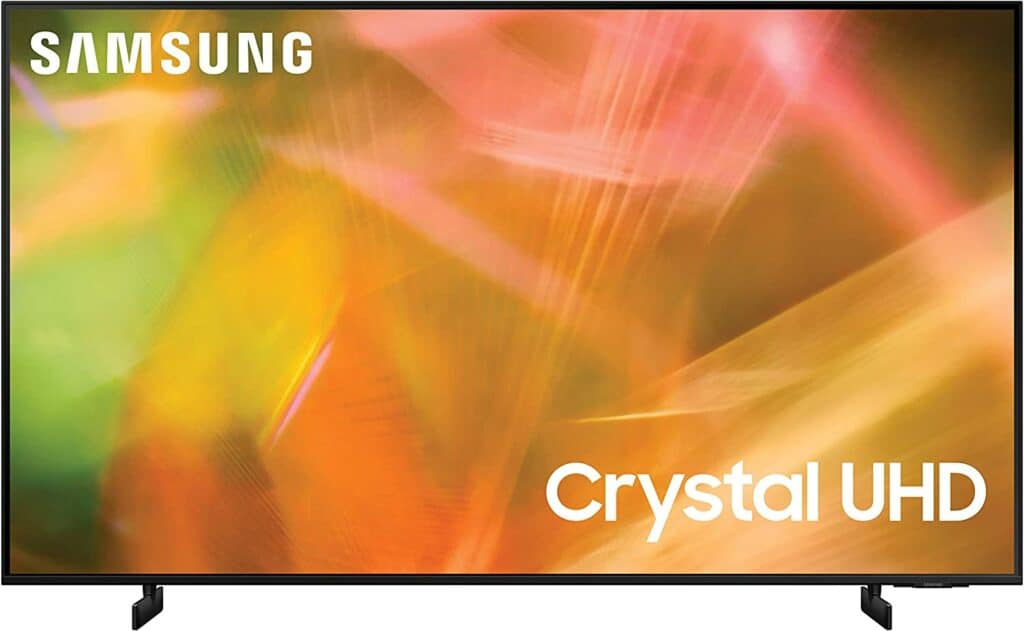
TU 9010
If you want to go for a high-end option, the TU 9010 86-inch offers many of those same features on a larger screen. It also comes with built-in voice assistants and a great motion rate to minimize motion blur.
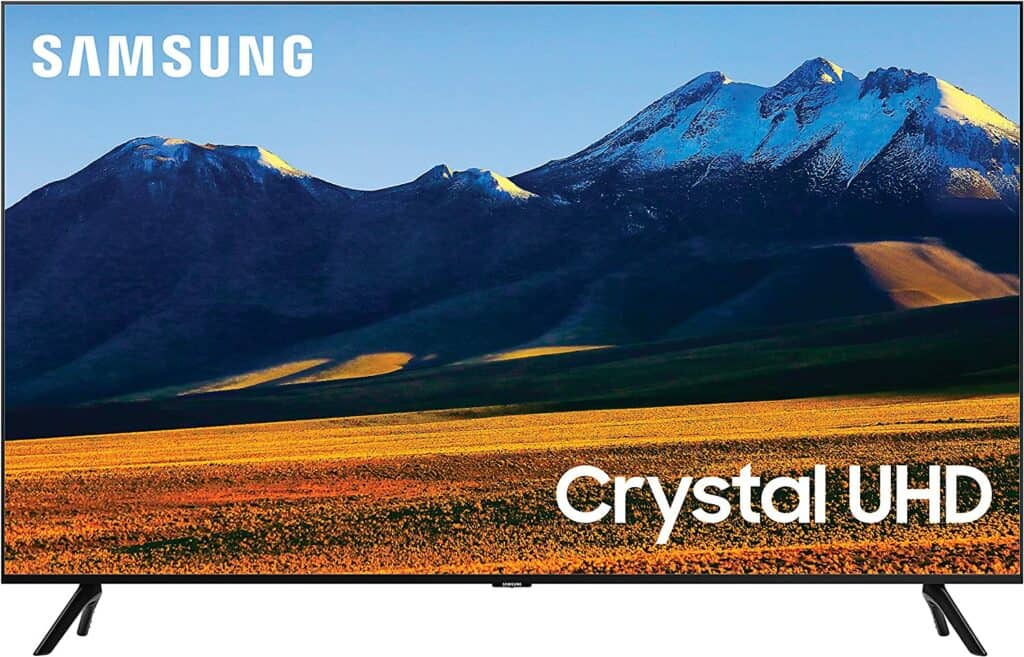
TU 8300 Curved
There is a case to be made for curved TVs and monitors when it comes to immersion, which is a big deal in gaming. This TU 8300 is a great choice for a gaming 4K TV, although its refresh rate is 60 Hz.
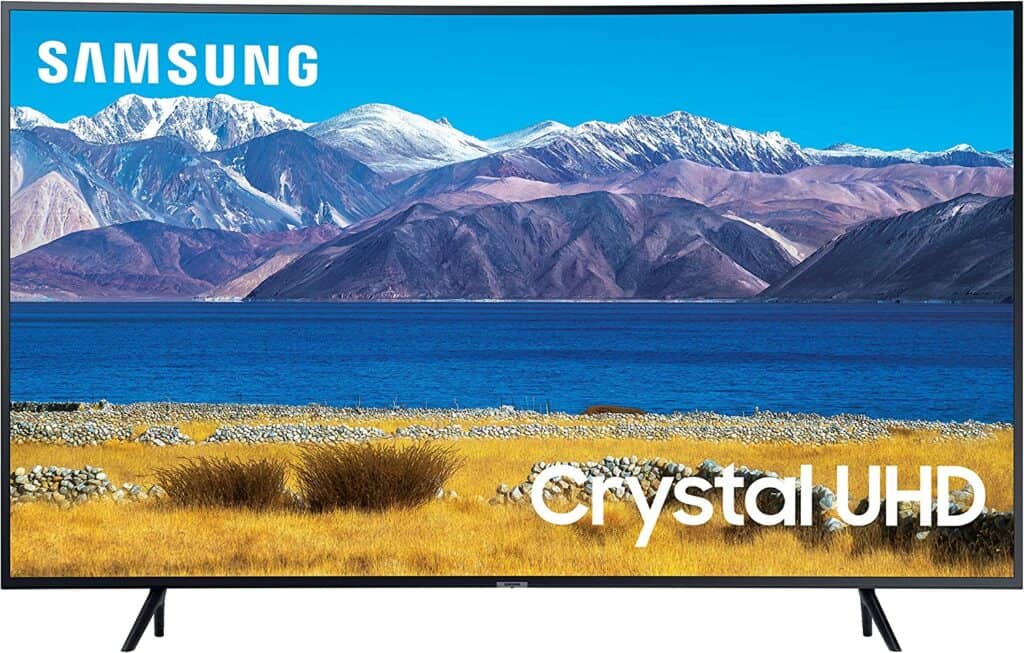
What is QLED technology?
QLED stands for Quantum LED or Quantum Light-Emitting Diode – its name stems from the quantum dot layer positioned in front of the LED backlight, which significantly improves image quality.
Currently, QLED is Samsung’s main focus in the TV market, especially in the high end of the pricing spectrum. Certain 8K QLED TVs are among the most expensive, best sets you can find on the market.
Although Samsung is the most significant manufacturer of QLED panels, brands like TCL, Hisense, and Vizio all sell QLED TVs.
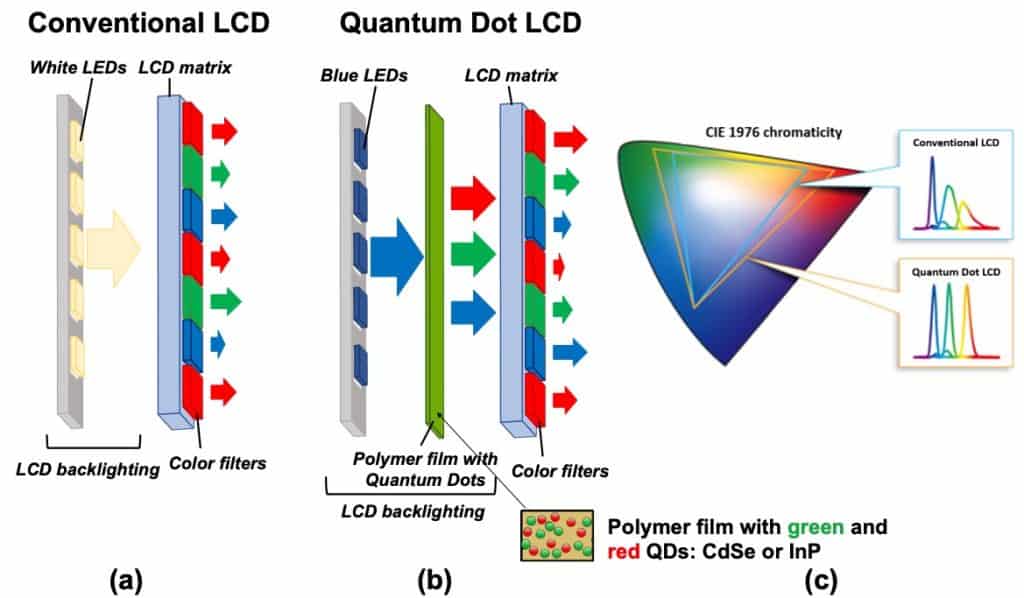
How does QLED work?
Similar to Crystal UHD, QLED isn’t an extensive overhaul of the existing LED technology. It doesn’t do away with the LED backlight, but it does provide an important update that’s just impressive enough to help it rival OLED.
The update in question is the quantum dots we mentioned – semiconducting nanoparticles that can absorb the light from the LED backlight and emit light of a different wavelength. The exact wavelength can be altered precisely, which is useful for display devices that need color precision and contrast.
In simpler terms, the quantum dot layer is an essential addition to existing LED technology that dramatically improves the viewing experience. Combined with other innovations, it makes QLED competitive in the high-end TV market.
Advantages of QLED over other technologies
QLED’s main competitor is the OLED panel technology from LG: the two companies offer competing products at similar price points, and they both target the high-end market.
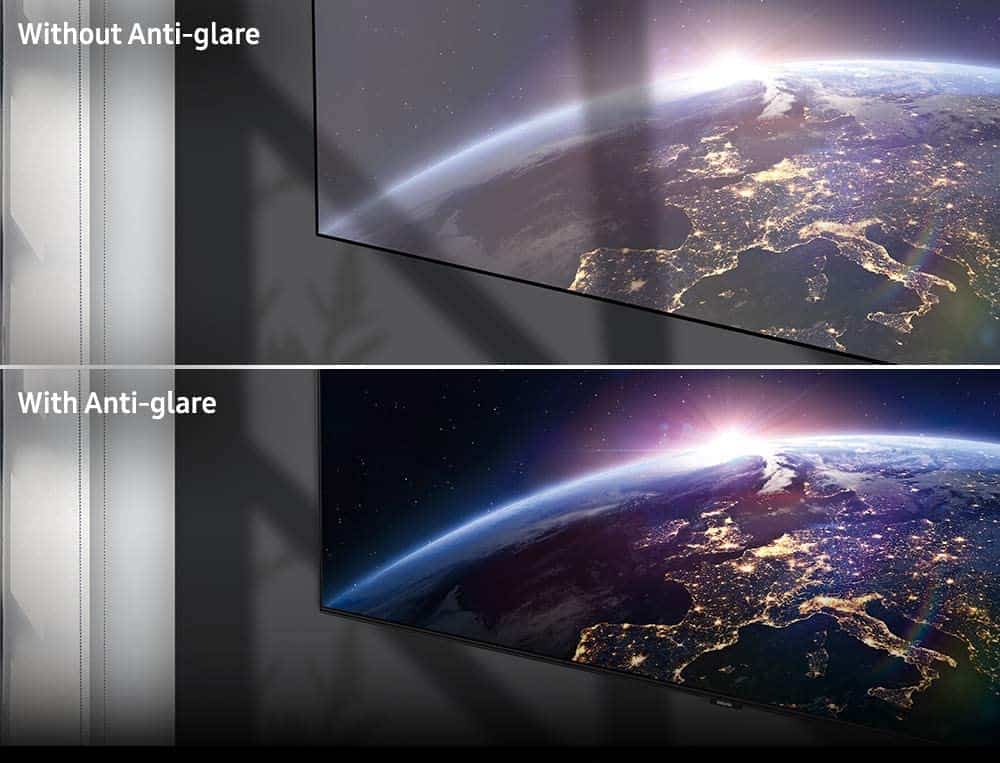
Compared to OLED, QLED offers higher brightness levels and much better performance in daylight conditions. Although OLED has addressed this with newer models, the fact that QLED panels still have an LED backlight is hard to overstate in this case. If you’re looking for a top-tier LED TV for a living room that receives a lot of sunlight, QLED might be your best choice.
Since QLED is a premium product line, it outperforms Crystal UHD in almost every relevant category. Although it depends on the specific model and size, QLED generally offers higher contrast and brightness, wider viewing angles, and deeper blacks. OLED is still the master of the black range but, compared to Crystal UHD, QLED generally performs better.
Disadvantages of QLED over other technologies
On the other hand, QLED still can’t measure up to OLED. Even with the most expensive QLED sets, you’ll occasionally experience some of the ailments that come with traditional LED TVs: light bleeds, an unconvincing black range, and relatively lousy viewing angles.
The lack of a backlight in OLED panels means they managed to address many of these insufficiencies to a great extent. As outlined in our OLED vs QLED comparison, the individually lit pixels in OLED panels produce the best black range and viewing angles on the market.
Another thing worth mentioning is power efficiency. The LED backlight in QLED panels consumes much more energy than OLED TVs, which are at the top of the class when it comes to power saving.
Compared to all other panels on the market, QLED is still among the best performing technologies you can get right now. Its closest competitor is LG’s NanoCell, although QLED seems to be a more advanced, more widely adopted technology at the moment.
The best QLED TVs on the market
The QLED market is vibrant and served by various capable brands. Here are some of the best QLED TVs on offer.
Samsung Q80A
The latest QLED TV from Samsung, the Q80A comes in more than four sizes. It also offers OTS (Object-Tracking Sound), a signature technology that tailors the sound to the action on the screen. Along with a 120 Hz refresh rate and four HDMI 2.1 ports, it’s one of the best QLED TVs you can get at the moment.
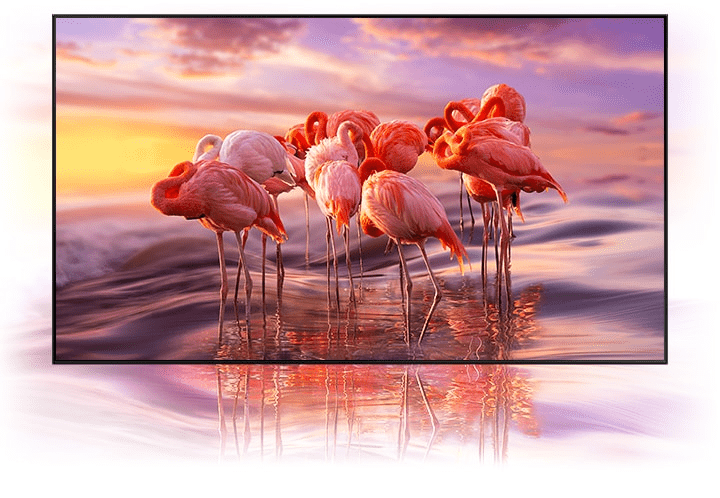
Samsung Q60A
If you’re looking for something a little more affordable, the Q60A is an excellent option. It comes in 10 sizes, from 32’’ to 85’’, and features the Lite version of the mentioned OTS technology. However, the Q60A isn’t ideal for next-gen gaming with a 60 Hz refresh rate.
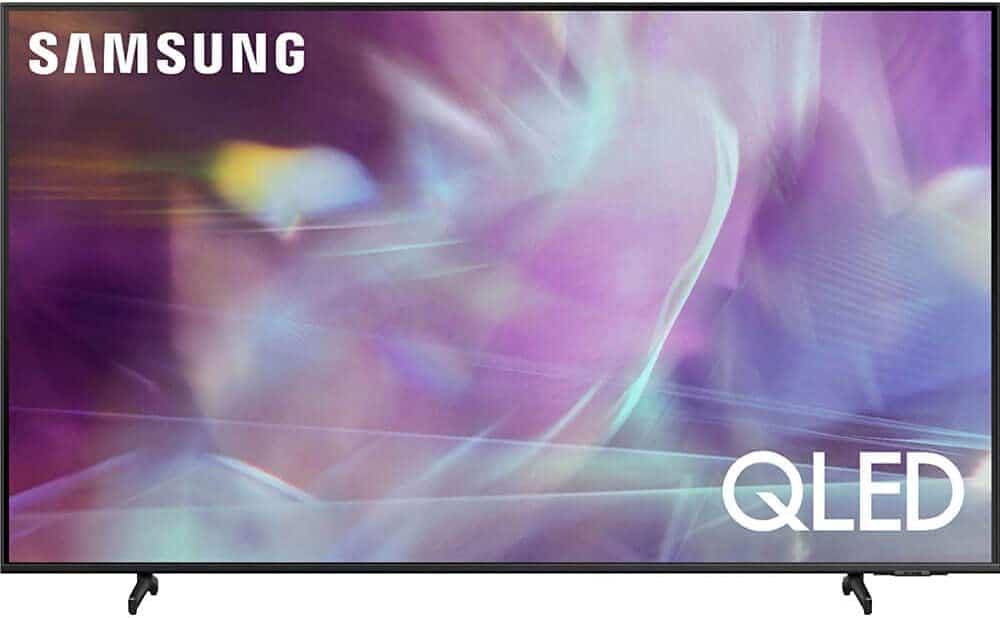
TCL Class 6-Series
The QLED market is by no means exclusive to Samsung – among others, TCL makes some outstanding QLED panels. Some of those can be found in the 6-Series: a 120 Hz refresh rate, an elaborate game mode, and four HDMI 2.1 ports make this model as impressive as it is affordable.
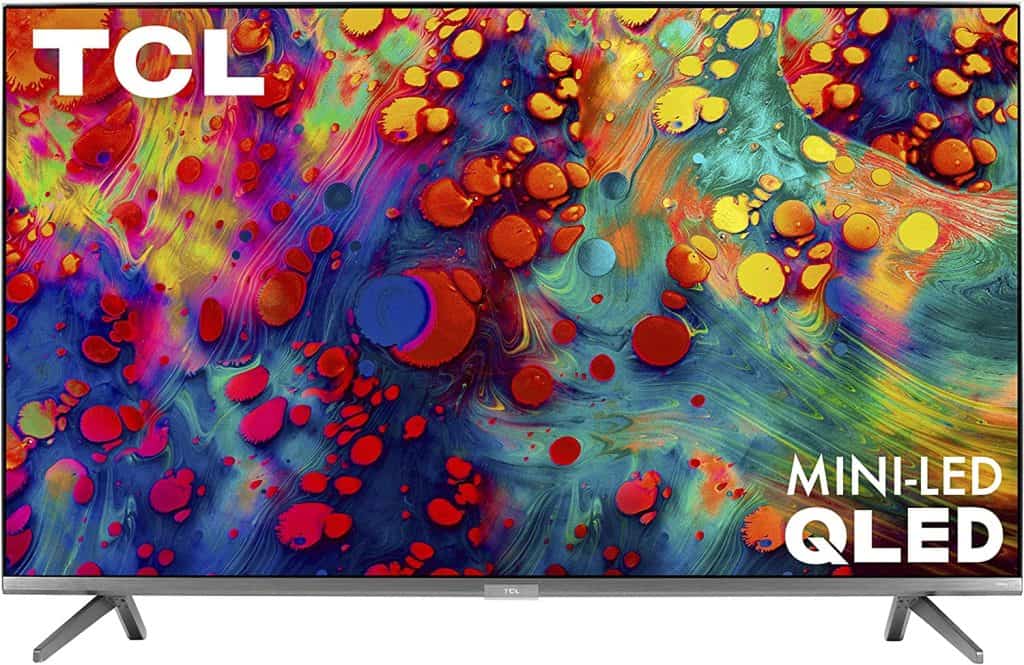
QLED vs Crystal UHD – key differences and similarities
Comparing Samsung Crystal UHD vs QLED, you can see that they have one big thing in common: they both use a backlight that provides the same benefits and limitations as other technologies (OLED in particular).
High brightness levels, excellent contrast, and unmatched performance in well-lit environments are something that both of these product lines have been offering for a long time.
On the other hand, they both struggle with black levels, color bleeding, and viewing angles – all due to the LED backlight they both have.
It’s important to mention that QLED has addressed many of these issues and surpassed Crystal UHD significantly in the past few years. The color vibrancy and brightness that QLED provides are top-of-the-market, outperforming even the more expensive OLED models.
All of this comes at a price: you’ll find that most QLED TVs are more expensive than their Crystal UHD counterparts when measured per inch.
Here’s a detailed comparison of the two product lines across several categories.
| Comparison | QLED | Crystal UHD |
|---|---|---|
| Brand(s) | Samsung, TCL, Hisense, Vizio | Samsung |
| Market segment | Premium | Mostly mid-range with some high-end models |
| Technology used | A quantum dot filter that enhances color performance | Standard LED technology in 4K resolution |
| Viewing angle | Generally narrow but improved with recent models | Narrower than QLED, some discoloration for outside-seated viewers |
| Contrast and brightness | Higher contrast and brightness, contrast ratio over 4,000:1 | High contrast and brightness, contrast ratio can go over 4,000:1 in more expensive models |
| Black levels | Deep, more nuanced black range | Unconvincing black range |
| Perfect viewing conditions | Any, but better in dark, dimmed rooms | Daylight |
| Product variety | Offers a wider range of products, also available from other brands | Only offered by Samsung, lacks high-end options |
Conclusion
Looking at Samsung’s Crystal UHD vs QLED, the comparison is quite clear: QLED is marketed and produced as a premium option, while Crystal UHD is a line of standard 4K TVs.
However, “standard 4K” is almost an oxymoron. There’s nothing standard about 4K, and there are some amazing models to be found in Samsung’s Crystal UHD offering that will blow your regular LED TV out of the water.
The key question here is whether it’s worth paying the few hundred bucks extra to get a QLED TV over a Crystal UHD. This question is for each user to answer on their own, and it may ultimately come down to particular models and retailers’ offers.
QLED will provide you with a better viewing experience across the board: higher brightness and contrast, deeper blacks, better color vibrancy, and wider viewing angles. You should probably pay the additional price if you’re a cinephile.
Crystal UHD offers some impressive models that can rival QLED, especially in the gaming category. If you’re a budget user, you can probably find some great Crystal UHD models at a bargain rather than spending extra money on a QLED TV.